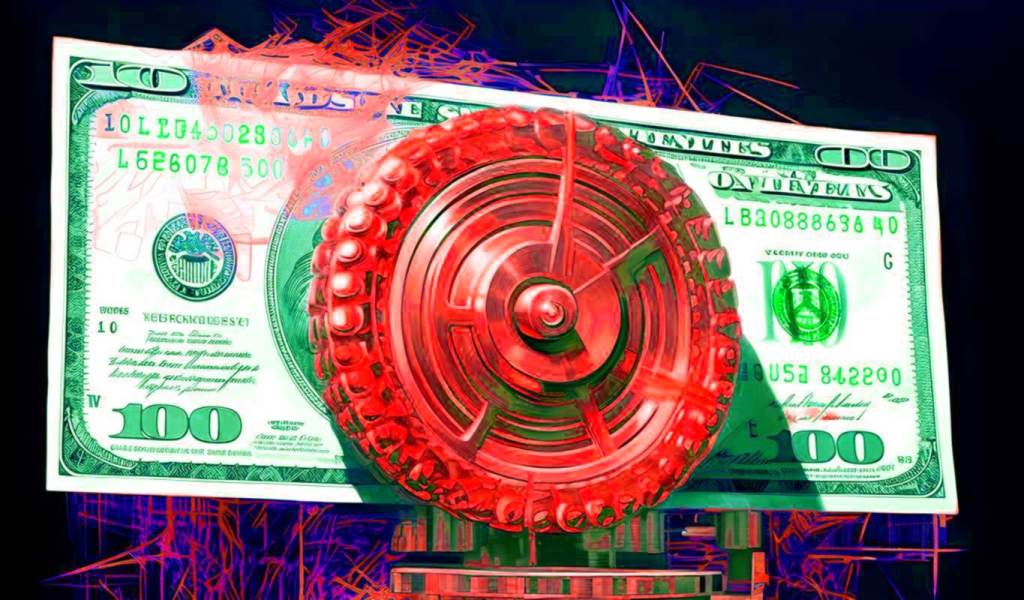
Bank of America customers are reporting massive issues with online and mobile banking. The site monitoring service Downdetector shows tens of thousands of customers have reported severe service disruptions in the last few hours, with users on the social media platform X stating that their balances have dropped to zero. Downdetector says it’s also witnessing […]
The post Bank of America Confirms Massive Outage and $0.00 Account Balances As JPMorgan Chase, Wells Fargo Customers Report Digital Banking Disruptions appeared first on The Daily Hodl.

What’s behind the correction in the US stock market and how might it continue to negatively impact cryptocurrencies?
The S&P 500 index experienced a 2.6% decline over the past two days, testing the 5,523 level on July 18. This correction erased gains from the previous two weeks but saw decent buying activity in the last trading hours after chipmaker Taiwan Semiconductor Manufacturing Company (TSM) reported earnings above market consensus.
Investor morale was negatively affected, which partially explains why Bitcoin (BTC) and Ether (ETH) traded down on July 18. Understanding the reasons behind the US stock market decline is essential to determine whether cryptocurrencies should sustain a positive correlation.
Fear of rising inflation due to unsustainable government debt might present a short-term negative impact but it also opens an opportunity as investors seek alternative scarce assets. However, if investors feel that the economy is worsening, especially in the job market, traders are likely to seek protection in cash and short-term government bonds.

An Ohio family says a single phone call led to thousands of dollars being drained from their JPMorgan Chase bank account – and Chase says they’re on the hook for it. The Kalista family says they recently received a phone call from what was allegedly Chase, notifying them of suspicious activity, News 5 Cleveland reports. […]
The post $22,000 Disappears From JPMorgan Chase Account After Customer Reports Suspicious Activity – Now Bank Says Reimbursement Is Not Happening: Report appeared first on The Daily Hodl.

Risk-averse BTC derivatives traders throw in the towel after futures contracts trade below the spot market price.
Bitcoin's (BTC) month-to-date chart is very bearish, and the sub-$18,000 level seen over the weekend was the lowest price seen since December 2020. Bulls' current hope depends on turning $20,000 to support, but derivatives metrics tell a completely different story as professional traders are still extremely skeptical.

It’s important to remember that the S&P 500 index dropped 11% in June, and even multi-billion dollar companies like Netflix, PayPal and Caesars Entertainment have corrected with 71%, 61% and 57% losses, respectively.
The U.S. Federal Open Market Committee raised its benchmark interest rate by 75 basis points on June 15, and Federal Reserve Chairman Jerome Powell hinted that more aggressive tightening could be in store as the monetary authority continues to struggle to curb inflation. However, investors and analysts fear this move will increase the recession risk. According to a Bank of America note to clients issued on June 17:
“Our worst fears around the Fed have been confirmed: they fell way behind the curve and are now playing a dangerous game of catch up.”
Furthermore, according to analysts at global investment bank JPMorgan Chase, the record-high total stablecoin market share within crypto is “pointing to oversold conditions and significant upside for crypto markets from here.” According to the analysts, the lower percentage of stablecoins in the total crypto market capitalization is associated with a limited crypto potential.
Currently, crypto investors face mixed sentiment between recession fears and optimism toward the $20,000 support gaining strength, as stablecoins could eventually flow into Bitcoin and other cryptocurrencies. For this reason, analysis of derivatives data is valuable in understanding whether investors are pricing higher odds of a downturn.
Retail traders usually avoid quarterly futures due to their price difference from spot markets, but they are professional traders' preferred instruments because they avoid the perpetual fluctuation of contracts' funding rate.
These fixed-month contracts usually trade at a slight premium to spot markets because investors demand more money to withhold the settlement. This situation is not exclusive to crypto markets. Consequently, futures should trade at a 5%-to-12% annualized premium in healthy markets.

Bitcoin's futures premium failed to break above the 5% neutral threshold, while the Bitcoin price firmly held the $29,000 support until June 11. Whenever this indicator fades or turns negative, this is an alarming, bearish red flag signaling a situation is known as backwardation.
To exclude externalities specific to the futures instrument, traders must also analyze the Bitcoin options markets. For example, the 25% delta skew shows when Bitcoin market makers and arbitrage desks are overcharging for upside or downside protection.
In bullish markets, options investors give higher odds for a price pump, causing the skew indicator to fall below -12%. On the other hand, a market's generalized panic induces a 12% or higher positive skew.

The 30-day delta skew peaked at 36% on June 18, the highest-ever record and typical of extremely bearish markets. Apparently, the 18% Bitcoin price increase since the $17,580 bottom was sufficient enough to reinstall some confidence in derivatives traders. While the 25% skew indicator remains unfavorable for pricing downside risks, at least it no longer sits at the levels which reflect extreme aversion.
Some metrics suggest that Bitcoin may have bottomed on June 18, especially since the $20,000 support has gained strength. On the other hand, market analyst Mike Alfred made it clear that, in his opinion, “Bitcoin is not done liquidating large players. They will take it down to a level that will cause the maximum damage to the most overexposed players like Celsius.”
Until traders have a better view of the contagion risk from the Terra ecosystem implosion, the possible insolvency of Celsius and the liquidity issues being faced by Three Arrows Capital, the odds of another Bitcoin price crash are high.
The views and opinions expressed here are solely those of the author and do not necessarily reflect the views of Cointelegraph. Every investment and trading move involves risk. You should conduct your own research when making a decision.